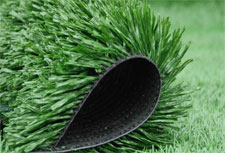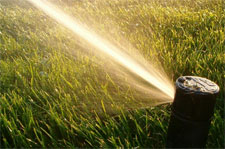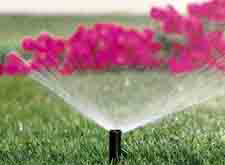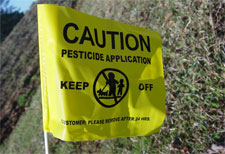 New Legislation*
New Legislation*
In recent years the California legislature has proposed bills that would require homeowners associations (HOAs) to permit the installation of artificial turf (grass) in their communities. Those bills never made it into law, and were vetoed by the California Governor due to the Governor’s belief that “[t]he decision about choosing synthetic turf instead of natural vegetation should be left to individual homeowners associations, not mandated by state law.”
AB 349, proposed earlier this year, marked the latest attempt by the California Legislature to restrict the authority of HOAs to prohibit artificial turf. AB 349 was proposed as an urgency statute based upon the following rationale of the California Legislature:
“While in the middle of a water shortage crisis, homeowner associations are not allowing homeowners to make voluntary sacrifices and are still forcing them to maintain grass lawns, by installing artificial grass, and are fining them if they are out of compliance. [AB 349] ensures that all homeowners have the right to better conserve water by voluntarily replacing grass with artificial grass. Property owners who pursue water conservation by installing artificial grass should be encouraged, not sued or fined. Thus, this act is necessary for the immediate preservation of the public peace, health, and safety.”
The prolonged California drought has apparently lead to a reversal in the Governor’s position on this issue and AB 349 was signed into law on September 4, 2015. As a result, Civil Code Section 4735 has been amended to render void and unenforceable any provision of a HOA’s governing documents (i.e., a HOA’s architectural standards) that “prohibits, or includes conditions that have the effect of prohibiting, the use of artificial turf or any other synthetic surface that resembles grass.” (Civ. Code § 4735(a)(2).)
This language was modeled after similar protections already existing in Section 4735 for homeowners seeking to use “low-water using plants.” An additional amendment to Section 4735 as a result of AB 349’s passage includes the incorporation of new subpart (d) that protects homeowners from having to “reverse or remove” water-efficient landscaping measures that were installed in response to a government-declared drought period once the drought period concludes.
| AB 349’s changes to the law take effect immediately as an urgency statute. HOA boards, architectural committees and management professionals must take note of the changes to Civil Code Section 4735. While AB 349 does not address what types of restrictions (as opposed to flat prohibitions) a HOA may place on the installation of artificial turf, HOAs should endeavor to amend their architectural standards in order to provide some guidance to homeowners on this issue and to deter the use of low quality turf materials. |
 HOA Lawyer Blog
HOA Lawyer Blog


 The requirements for operating and maintaining “public pools” have been subject to various regulatory changes in recent years. Those changes have impacted pools within private homeowners associations (HOAs), as the California Legislature and Department of Health have defined the term “public pools” to include pools located within private HOAs and residential developments. (Health & Safety Code §§
The requirements for operating and maintaining “public pools” have been subject to various regulatory changes in recent years. Those changes have impacted pools within private homeowners associations (HOAs), as the California Legislature and Department of Health have defined the term “public pools” to include pools located within private HOAs and residential developments. (Health & Safety Code §§  *New Regulations
*New Regulations *Asked & Answered
*Asked & Answered Most every set of Homeowners Association (“HOA”) CC&Rs contain a provision prohibiting conduct which constitutes a “nuisance.” That conduct often includes “noxious, illegal or offensive activities,” anything which “unreasonably interferes with a resident’s right to quiet enjoyment” and/or “endangers their health or annoys or disturbs” them. We have blogged about how such nuisance provisions may be employed to resolve issues such as the
Most every set of Homeowners Association (“HOA”) CC&Rs contain a provision prohibiting conduct which constitutes a “nuisance.” That conduct often includes “noxious, illegal or offensive activities,” anything which “unreasonably interferes with a resident’s right to quiet enjoyment” and/or “endangers their health or annoys or disturbs” them. We have blogged about how such nuisance provisions may be employed to resolve issues such as the  *New Legislation
*New Legislation *New Legislation
*New Legislation
 *New Library Article
*New Library Article *New Legislation
*New Legislation